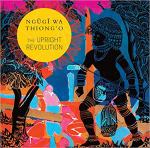
|
Pages 1 - 19
· The following version of this story was used to create the Lesson Plan: Wa Thiong'o, Ngũgĩ. "The Upright Revolution, or Why Humans Walk Upright." Seagull Books, 2019.
· The story begins like many fairy tales with “Once upon a time” (1) and describes a time very long ago when humans walked on arms and legs “just like all the other four-limbed creatures” (1).
· During that time humans could outrun “hares, leopards, or rhinos” (3).
· Legs and arms were in closer proximity than other organs.
· Legs and arms had similar corresponding joints such as: “shoulders and hips; elbows and knees; ankles and writs; feet and hands, each ending with five toes and fingers” (4).
· Likewise, hands and feet had similar parts: “five toes and fingers” (6).
· One difference at that time was the thumb, which “was close to the other fingers, the same as the big toe” (6).
· The legs and arms worked together...
|
This section contains 1,602 words (approx. 6 pages at 300 words per page) |

|




